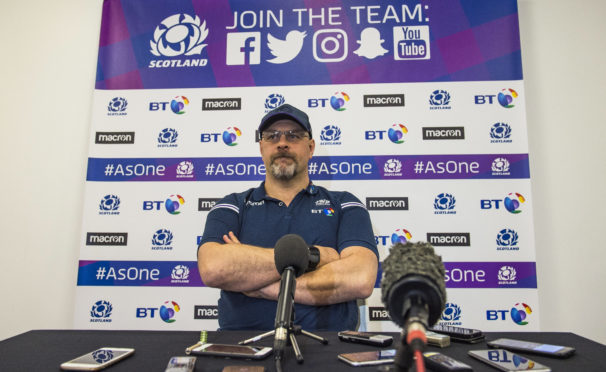Scotland won’t rethink their approach but look for greater accuracy and – crucially – composure as they try to rescue their NatWest 6 Nations campaign, says forwards coach Dan McFarland.
That clearly involves everyone – coaches primarily – taking responsibility for the disastrous start in Cardiff, but McFarland doesn’t believe it means the Scottish gameplan is too naïve for the 6 Nations.
“I don’t see why we would rethink our approach, it has brought us success,” he said. “I don’t know whether there is a perception that we fling the ball around like a bunch of “darlings” but we have tremendous variety in our game.
“At the weekend we made space, we broke Wales on numerous occasions, but we just weren’t accurate when we did that.
“We can be direct, we can move the ball to space, we can score tries from mauls, we can kick and chase. There are plenty of ways for us to play the game, but it doesn’t matter what way you’re playing, if you are not accurate then you are not going to get a foothold in the game.”
Early successes – although they didn’t lead to points – showed that it wasn’t a question of Wales studying Scotland’s style and finding a way to stop it.
“They didn’t do it well enough to stop us breaking them a lot in the first 20 minutes, which we did do,” he continued. “We’re confident that if we do our style of play well, with the variety which we have, then we’ll cause any defence trouble. We just weren’t accurate with it.”
He did concede that the early mistakes and the 14-0 deficit did reflect a lack of composure from the Scottish team.
“Composure was important,” he continued. “Those kinds of situations do happen, where you are put on the back foot early, having done pretty well in a helter-skelter start, when could have been the team that were 7-0 up.
“It turned around that we weren’t, and little things going against you like you chase back to stop a try, they knock on, we get a scrum – and get a free-kick against us for a feed at the scrum.
“Little things like that, that are knocking you. We’ve got to be able to wash and move on. We focus on that.”
McFarland said that “the first thing” the coaches had done was look at themselves.
“What did we get wrong? Could we have done anything differently? For myself, we had an excellent line-out in the summer and in the autumn we didn’t function very well – I’ve got to take that.
“The lads trained hard and going into it we thought we were going to do well there but their line-out defence was excellent. I’ve got ask myself some question about how I prepared us for that game.”
With France and England to come at Murrayfield in the next two rounds – discussion of Scotland’s away day difficulties will be postponed for the moment – the championship was still alive.
“In 2013, Wales were beaten comfortably by Ireland in the first game at home and won the championship,” he pointed out.
“As far as we’re concerned, as long as it is statistically available for us to win the championship then, yes, we can. We’ll look to win every game from here on in.
“If I said anything less then you would think it extremely odd, wouldn’t you?”
